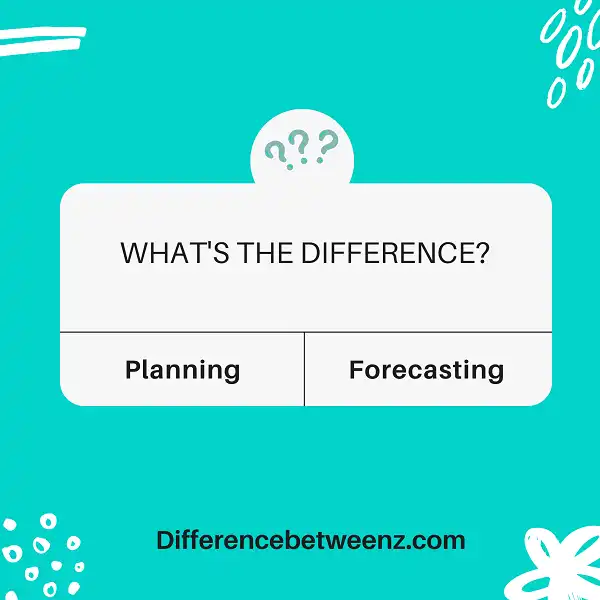In today’s business world, it is important to be able to differentiate between planning and forecasting. Although these two terms are often used interchangeably, they have very different meanings. In this blog post, we will explore the differences between planning and forecasting and provide examples of each. We hope that this information will help you better understand these two essential business concepts.
What is Planning?
- Planning is an essential part of any creative or business endeavor. Planning entails mapping and organizing processes in order to maximize the efficiency, effectiveness, and success of a given activity.
- It involves an in-depth analysis of events and tasks, considering resources and timing as primary components. Planning requires both foresight of potential obstacles and contingency plans for problems that may arise along the way.
- Planning is distinct from other activities such as designing or executing projects because it focuses on organizing and predicting potential scenarios before starting to implement them. Planning allows us to develop a comprehensive blueprint for achieving longer-term goals, creating a pathway for success.
What is Forecasting?
- Forecasting is a distinct process for looking into the future. Forecasting techniques can be used to predict market trends, determine demand, forecast financial performance, and more.
- Forecasting involves taking historical data of past events and analyzing it in order to make predictions about the future. Forecasters need to factor in various elements such as economic cycles, political environments, and various macroeconomic factors when making their predictions.
- Forecasting can provide a great deal of insight into the future that organizations can use to plan strategically and make informed decisions.
Difference Between Planning and Forecasting
Planning and forecasting are two distinct processes, though they are often confused with one another.
- Planning refers to setting up long-term goals and determining the steps to reach them. It’s an analytical process and involves accumulating data and leveraging technology to develop courses of action that can achieve these large-scale objectives.
- Forecasting on the other hand is more of a predictive exercise that uses qualitative as well as quantitative approaches to anticipate future outcomes based on market patterns or trends.
- It provides valuable insight into potential influences like liquidity, inflation, or consumer behavior making it a vital factor in decision-making when planning for the future.
Overall, it is evident that while planning focuses on setting up strategies to achieve the long-term purpose, forecasting is used to gauge the probability of those strategies being effective beforehand.
Conclusion
Forecasting is important because it allows you to make better decisions in the present. By taking past data and trends into account, you can develop a projection of what is likely to happen in the future. This information can help with strategic planning, budgeting, and other decision-making processes. However, it’s important to remember that forecasting is never 100% accurate – there are always unforeseen variables that can affect the outcome. With that in mind, use your forecasting as a guidepost and be prepared to adapt as needed.


